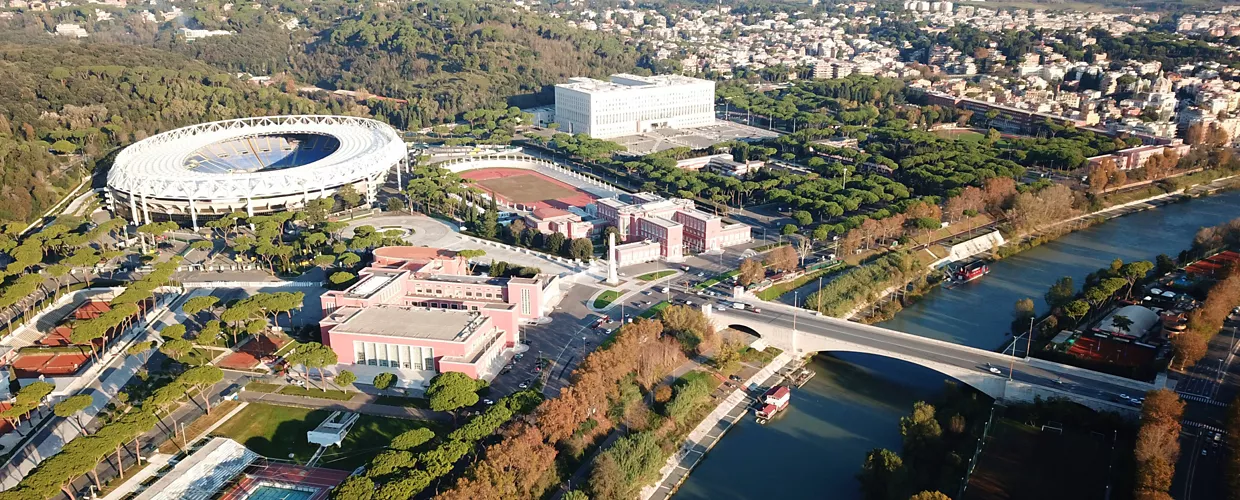
Overview
Foro Italico: the sports complex of fascist origin that has become a symbol of Rome
The Foro Italico is one of the symbols of Rome and a major attraction on a national level.
A sports complex dating back to the 1930s, its construction dates back to the fascist era and today is definitely worth a visit to the capital.
Its history is inextricably linked with Mussolini
Its history is very fascinating, starting with the choice of the most suitable place to host it.
After considering the Tiburtino district, where the University City was later built, the Casal Palocco district and the Parioli district, where the Olympic village was later built for the Games of the 17th Olympiad in 1960, an area adjacent to the Tiber river was chosen, to be reclaimed. In the background, the hill of Mont Mario.
Inaugurated in 1932 as the Foro Mussolini, the Foro Italico in its very first version consisted of the Fascist Academy of Men's Physical Education, the Mussolini obelisk, the Stadio dei Marmi and the Stadio dei Cipressi, later called the Stadio dei Centomila, today the Stadio Olimpico.
Enrico Del Debbio was in charge of the project and its construction between 1927 and 1933. However, it was completed between 1956 and 1968.
An evolving project
Several years passed between its conception and completion, but from the outset, the Foro Italico was not intended to be a unitary and complete project, but rather an evolving sports complex with the progressive inauguration of various buildings dedicated to the practice of various sports disciplines. It would also involve several architects over time.
The Forum today
The entrance is currently in Piazza Lauro De Bosis, where the marble Obelisk dedicated to Mussolini stands out.
To the right is the former Academy of Physical Education, now the CONI headquarters, and to the left of the obelisk is the Palazzo delle Terme, where the former Academy of Music, now the ISEF and RAI auditorium, the Indoor Swimming Pool with floor and wall mosaics and the former Duce gymnasium are located.
The initial project included the Stadio dei Marmi, as already mentioned. It was of Hellenic inspiration and surrounded by 60 white marble statues donated by various Italian provinces, all with a sporting theme, such as that of the javelin thrower, offered by the province of Perugia.
At the entrance is a mosaic with the image of eight athletic figures, designed by Angelo Canevari. The Stadio Olimpico was built on the original design of the Stadio dei Cipressi and the grandiose complex also includes the Foro Italico Swimming Complex, which includes the Olympic Swimming Stadium built for the 1960 Olympic Games to a design by Enrico Del Debbio and Annibale Vitellozzi.
The Walk of Fame
In 2015, the “Le Leggende dello Sport Italiano - Walk of fame” route was inaugurated on Olympic Avenue, with over 100 plaques dedicated to the names of former athletes who made Italian sports history.